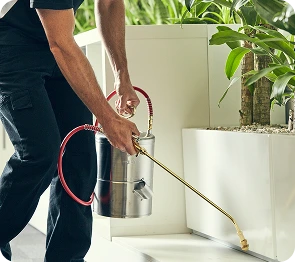Termites Pest Control and Treatment


Expert termite inspections, safe treatment options and proactive prevention tailored to your home.
Australia’s most destructive pest, termites can cause extensive structural damage before you even know they’re there. Early signs are subtle, and infestations often go undetected without professional inspection. Regular checks and targeted treatment are the best way to protect your property. At CPS, we use advanced detection tools, safe baiting systems and proven soil barriers to eliminate active colonies and prevent them from coming back.
Detect early signs and reduce risks
Eliminate active infestations safely
Protect your property long-term
Protect your home and business from costly damage
The most reliable way to protect your property from termites is through professional treatment and regular inspections. Subterranean termites are particularly destructive because of their close connection to moisture. In wetter months they expand their activity through shallow soil, tree roots and wall voids.
During drier conditions, they tunnel deeper underground to reach water sources while continuing to feed on timber above. This ability to adapt makes them the most widespread and costly termite species in Australia.
Professional termite protection from inspection to prevention
Termites can be hard to detect until costly damage is done. Regular inspections by a licensed technician help confirm any termite activity, apply effective treatments, and set up long-term defences to keep your property safe.
Our three-stage process for total termite protection
We carry out a comprehensive inspection to AS 3660 Termite Control in Buildings. We combine traditional methods with modern technology such as moisture meters and, where appropriate, thermal or microwave imaging. You will also receive a detailed written report with findings and practical recommendations on drainage, ventilation and risk reduction
Specialist termite pest control near you
We deliver consistent, high-quality termite prevention and eradication services for homes and businesses across Australia. Unlike global franchises or contractors, our full-time staff operate nationwide—so you get reliable service, clear accountability, and a standard of care you can trust, no matter where you are.
Safe for families and pets
We work with the latest in safe pest control technologies and treatments, keeping your staff and customers safe. Our professionally trained technicians use targeted solutions at the source of the problem to keep bugs out and keep your business safe.
Our ISO1401 certification for environmental impact management and HACCP food safety certification means you can trust Competitive Pest Control Services care about the safety and protection of your facility.
Our technicians use only the safest, environmentally friendly treatments available in and around your home, to keep pests at bay giving you peace of mind as the kids continue to play in a safe and healthy environment.
There’s more to effective pest control than chemicals. We target our applications to the source of the problem from enhanced inspections to exclusion methods followed by protection.
All our treatments are environmentally friendly, because we love the Earth as much as you do. Our expertise enables us to keep chemical application to a minimum to keep the pests away, and we’re 100% carbon neutral.

